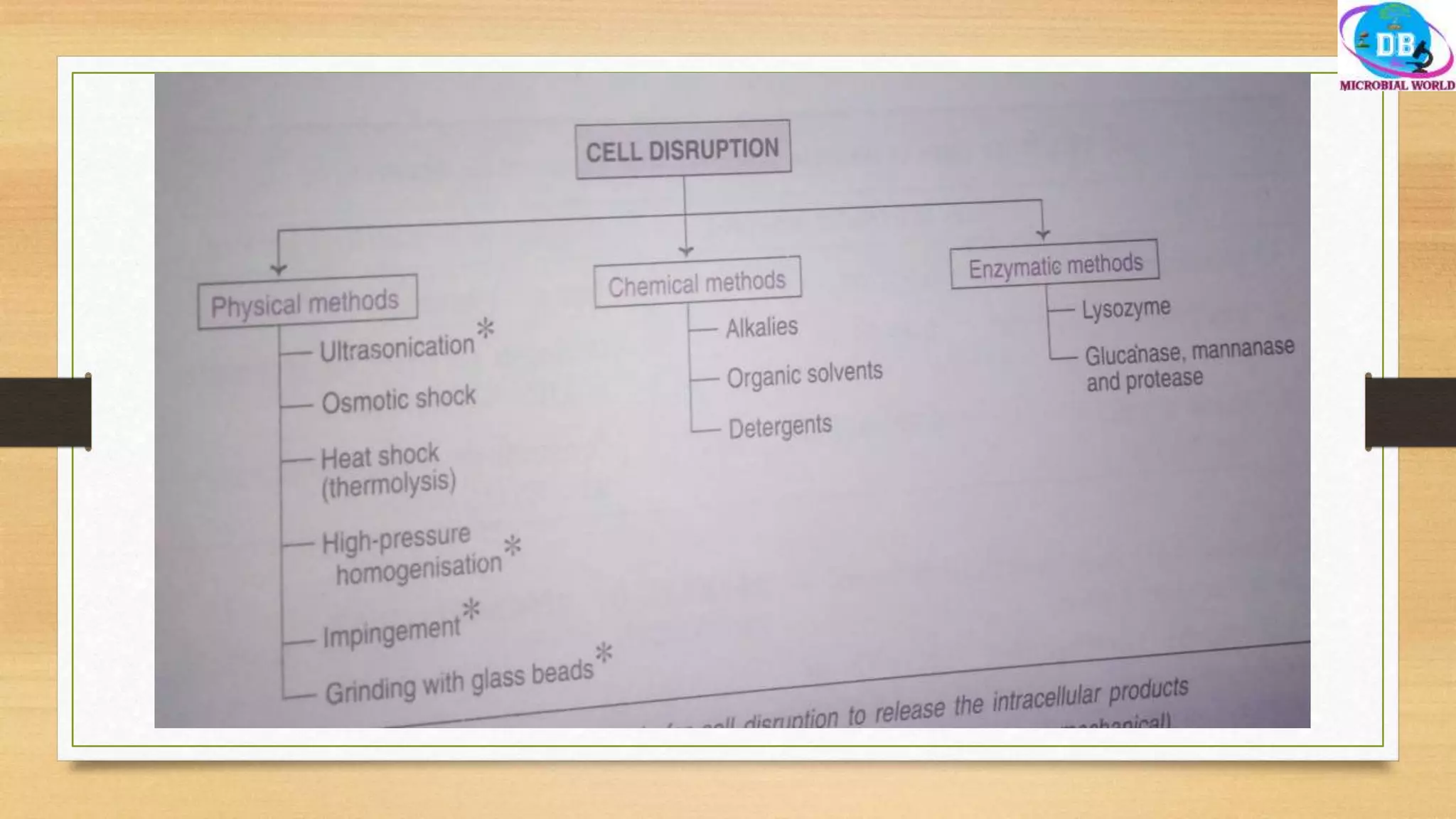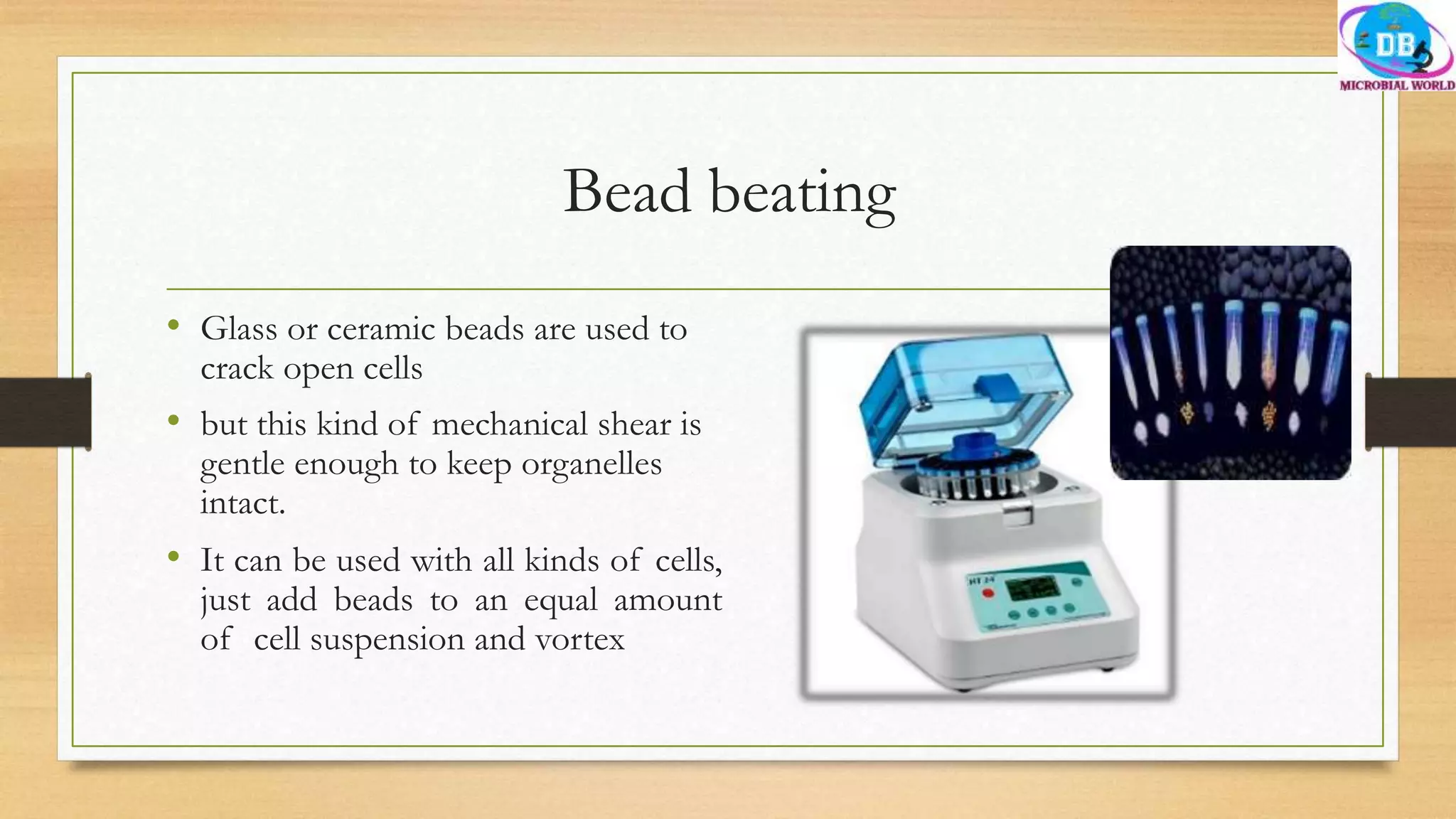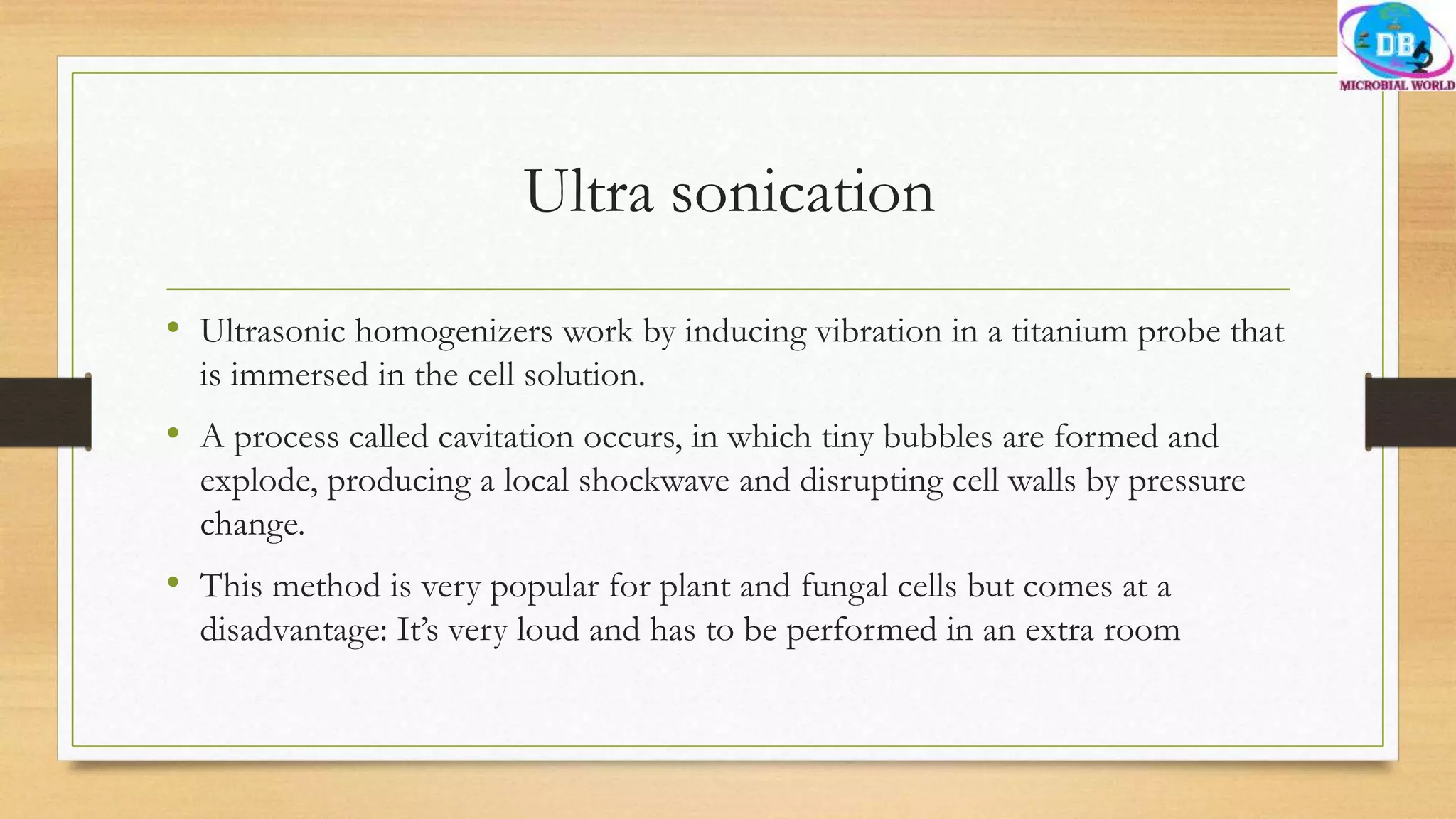This document discusses different methods for cell disruption, which is the process of breaking open cell walls to access intracellular components. It describes mechanical methods like mortar and pestle grinding, blending, bead beating, ultrasonication, and homogenization. It also outlines non-mechanical approaches like freeze-thaw cycles, microwaves, osmotic shock, electrical discharges, chemicals, and enzymes. The overall goal of cell disruption is to open the cell in a way that recovers intracellular contents without damaging them. The appropriate method depends on cell type and aims to effectively break cells while keeping products active.


















